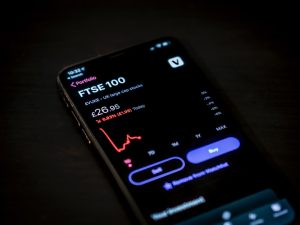Forex trading has become increasingly popular in recent years, with more and more people looking to make a profit by speculating on currency exchange rates. One of the key concepts that traders must understand is margin, which refers to the amount of money that must be deposited in a trading account in order to open a position. In this article, we will explain how to calculate forex margin when given only a percentage.
What is forex margin?
Forex margin is the amount of money that a trader must deposit in their trading account in order to open a position. This margin acts as a performance bond, ensuring that the trader has sufficient funds to cover any potential losses. The amount of margin required varies depending on the size of the position and the leverage offered by the broker.
Leverage is the amount of money that a trader can borrow from the broker in order to open a larger position than they would be able to with their own funds. For example, if a broker offers a leverage ratio of 100:1, a trader can open a position worth $100,000 with a margin of just $1,000.
How to calculate forex margin when given only a percentage
When trading forex, it is important to understand the concept of margin and how it is calculated. In order to calculate forex margin when given only a percentage, traders need to follow these steps:
Step 1: Determine the size of the position
The first step is to determine the size of the position that the trader wishes to open. This is typically measured in lots, with one lot representing 100,000 units of the base currency. For example, if a trader wants to buy one lot of EUR/USD, they are buying 100,000 euros and selling an equivalent amount in US dollars.
Step 2: Determine the leverage ratio
The next step is to determine the leverage ratio offered by the broker. This is typically expressed as a ratio, such as 50:1 or 100:1. This means that for every dollar of margin deposited in the trading account, the trader can open a position worth 50 or 100 dollars, respectively.
Step 3: Calculate the margin requirement
To calculate the margin requirement, traders need to multiply the size of the position by the leverage ratio and the percentage required by the broker. For example, if a trader wants to open a position worth $100,000 and the broker requires a margin of 2%, the calculation would be as follows:
Margin requirement = (position size x leverage ratio x margin percentage) / 100
Margin requirement = ($100,000 x 100:1 x 2%) / 100
Margin requirement = $2,000
Therefore, the trader would need to deposit $2,000 in their trading account in order to open a position worth $100,000 with a leverage ratio of 100:1 and a margin requirement of 2%.
It is important to note that margin requirements can vary depending on the broker and the currency pair being traded. Some brokers may offer higher leverage ratios for certain currency pairs, while others may require higher margin percentages for more volatile pairs.
Conclusion
In conclusion, calculating forex margin when given only a percentage requires traders to understand the size of the position, the leverage ratio offered by the broker, and the margin percentage required. By following the steps outlined in this article, traders can ensure that they have sufficient funds in their trading account to cover any potential losses and make informed decisions when trading forex.





